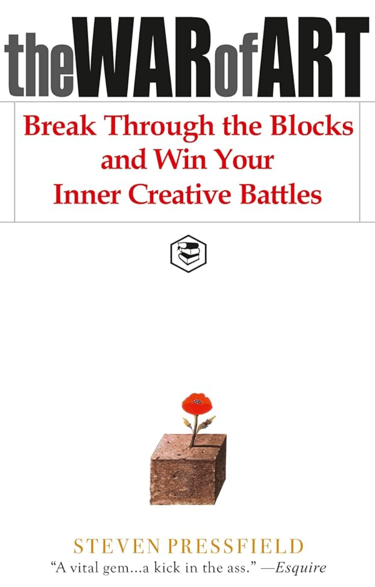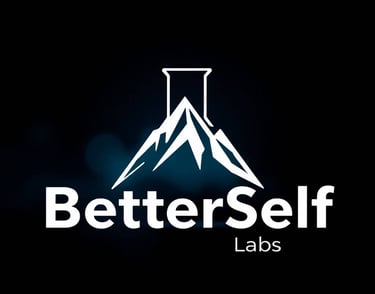Stop Waiting for Inspiration: What The War of Art Really Teaches
Real argument: Your biggest enemy isn’t talent or time. It’s “Resistance”, every internal force that blocks meaningful work. Discipline beats mood. Verdict: Read for a hard reset on discipline; borrow if you need data, not doctrine.
BOOKS
11/8/20255 min read


The Big Idea
Pressfield personifies your avoidance fear, perfectionism, busywork as Resistance. He argues that amateurs negotiate with Resistance, while professionals ignore feelings and execute. This is not a soft pep talk. It’s a manifesto for doing the work whether or not you feel inspired. The problem it solves: chronic creative drift. The trade-off: minimal science, maximum punch.
What’s New Here (and Why It Matters)
Plenty of books preach grit. Pressfield adds two moves that stick:
He gives your avoidance a name (Resistance), making it easier to spot and fight.
He reframes creativity as a job, not a mood. That frame travels well across writing, product, research, and startup building.
Compared to general productivity guides, this is tighter than most and more uncompromising than many. The value isn’t novelty; it’s focus.
Core Arguments / Plot Architecture (spoiler-safe)
Book I - Resistance: A catalog of how Resistance disguises itself: fear, procrastination, perfectionism, drama, self-doubt, even success hangovers.
Book II - Turning Pro: The cure is an identity shift. Pros show up daily, measure time rather than inspiration, and separate self-worth from outcomes.
Book III - Beyond: A spiritual layer muses, angels, and the idea that consistent labor attracts help once you start.
Evidence style: Anecdote, aphorism, war-story tone. No datasets.
Deep Dive
Frameworks & Models
Resistance Ledger
Keep a one-page list of your top five Resistance patterns (scrolling, polishing, “research,” sudden errands, new ideas).
Post it near your desk. When one appears, say “Resistance” out loud and do the next task anyway.
Turn-Pro Contract
One paragraph you sign: start time, end time, location, and scope (“I write 500 words,” “I push one build,” “I analyze 2 tables”).
Review weekly. Adjust only after seven days of evidence.
Ritual → Work → Shut-Down
Pre-work ritual (timer, beverage, headphones) to bypass mood.
Work in 50/10 or 40/20 blocks. No mid-block switching.
Hard stop + micro-review: what progressed; what’s tomorrow’s first move.
Finish Ugly Rule
If you’re 85–90% done and “perfecting,” stop at “good enough,” ship to a trusted reader, and collect feedback.
Momentum beats immaculate drafts.
Gatekeeper Test
Ask: Would a professional pay for this output? If no, fix scope or standard; don’t defend the first draft to yourself.
Evidence Check
Strengths: The personification of Resistance is sticky. Identity (“pro vs amateur”) is powerful behavioral leverage. The short sections reduce friction and invite re-reads.
Weaknesses: Evidence is mostly Pressfield’s experience. No citations, little psychology. Ideas like “muses” read as metaphor or mysticism depending on your taste. Survivorship bias is real; we hear from a successful creator telling you to grind.
Assumptions Under the Hood
Most creative problems are behavioral, not structural.
Regular, focused practice outperforms inspiration-chasing.
You can control your schedule enough to work consistently.
If your constraints are economic, caretaking, or clinical, some claims will feel blunt. The book doesn’t dwell on context.
Practical Takeaways
Install a daily start time. Same hour, same place. Protect it like a meeting with your best client.
Define “today’s win.” A measurable unit (words, lines of code, scenes, datasets). Close your day when it’s done.
Log the streak. Calendar or habit app. Don’t break it two days in a row.
Quarantine “research.” Pre-list what you need to look up. Batch it after your creation block.
Ship on Fridays. Weekly micro-ship (draft, demo, analysis). Public if possible; private to a peer if not.
Use constraints. Time-boxed sprints → small scope → faster feedback.
Finish ugly. Publish v0.1, then iterate. Prevent perfectionism from stalling release.
Micro-Playbook
Schedule tomorrow’s start and stop.
Choose one deliverable that fits 60–120 minutes.
Mute inputs. Close everything but the tool you need.
Work one block. No switching.
Log the win. Plan the first 10 minutes for tomorrow.
Contrarian Note
Pressfield’s pro vs amateur binary is motivating but can be reductive. It risks shaming legitimate pauses- incubation, rest, and problem reframing. Some work improves when you step away.
Why it matters: if you mistake all hesitation for Resistance, you’ll bulldoze nuance, burn out, and ship thoughtless work. The smarter stance: treat “pro” as reliable cadence, not constant output.
Blind Spots & Risks
Context poverty: Little about childcare, shift work, disability, or inequity that constrains “just show up.”
Mental health: Anxiety, depression, and ADHD aren’t cured by grit; they need tools and sometimes treatment.
Market reality: The book ends at “make.” It doesn’t teach distribution, monetization, or negotiation.
Mysticism risk: The “muses” chapter can alienate evidence-driven readers. Translate it as “flow” or skip it.
Who Should Read This (and Who Shouldn’t)
Read if:
You keep starting and abandoning projects.
You need a blunt reset on showing up.
You lead creative teams and want a shared language for execution.
Skip if:
You require empirical backing.
You’re seeking business playbooks or marketing funnels.
Spiritual metaphors are a hard no.
How to Read It
Pacing: One section per day for a month or one afternoon sprint; both work.
Skim vs. slow down: Skim the muse talk if it’s not your thing. Slow down on “Turning Pro” and the catalog of Resistance, you’ll see your patterns.
Format: Print or ebook. You’ll highlight and revisit.
Team use: Open meetings with a 5-minute “Resistance round.” Each person names one block; pair it with one next action.
Scorecard (1–10)
Originality: 7 - “Resistance” + “turn pro” still land.
Rigor / Craft: 5 - Persuasive essays, not research.
Clarity: 9 - Short, sharp, memorable.
Usefulness: 8 - High if you implement the cadence.
Re-read Value: 8 - A reliable kick whenever output stalls.
If You Liked This, Try…
Do the Work (Steven Pressfield): Same sermon, even tighter; good for launches.
Deep Work (Cal Newport): Evidence-leaning case for sustained focus and how to structure it.
The Creative Habit (Twyla Tharp): Concrete exercises to build daily practice.
Daily Rituals (Mason Currey): Proof that routines, not inspiration, made the masters prolific.
Four Thousand Weeks (Oliver Burkeman): Anti-hustle sanity check on limits and meaningful output.
FAQ
Is this only for writers or artists?
No. If your job creates artifacts—code, analyses, briefs—the model applies.
How is it different from generic productivity books?
Less systems, more psychology. It attacks the felt barriers directly.
What if I can’t control my schedule?
Shrink the unit. Ten reliable minutes beats two mythical perfect hours.
Do I need to buy into the spiritual parts?
No. Treat them as metaphor for flow and commitment.
Can this replace therapy or coaching?
No. It’s a discipline lens. Pair with support if you’re stuck for deeper reasons.
Final Verdict
The War of Art is a compact, bracing slap. It won’t teach you marketing, research methods, or monetization. It will teach you to stop bargaining with your own avoidance and to act like a professional start on time, work the block, finish the draft. If you want a no-fluff reset and can tolerate a little mythic language, buy. If you need citations and systems, borrow and pair it with a more structured guide.




